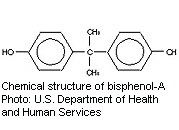
WEDNESDAY, Jan. 9 (HealthDay News) — According to a new study, there are signs that elevated levels of the plastics chemical bisphenol A in children’s urine are associated with an increased risk of heart and kidney disease.
Bisphenol A (BPA) is widely used in consumer products, including as an internal covering in aluminum food cans. Research has suggested that BPA disrupts human metabolism.
In this study, researchers at the New York University School of Medicine analyzed data from more than 700 children and teens aged 6 to 19 who participated in the 2009-2010 U.S. National Health and Nutrition Examination Survey.
The data included levels of BPA and a protein called albumin in the participants’ urine. The presence of albumin in urine is a sign of kidney damage.
Children and teens with the highest BPA levels in their urine had a higher albumin-to-creatinine ratio than those with the lowest BPA levels. A higher albumin-to-creatinine ratio can be an early marker of kidney damage and future risk of heart disease, the researchers said.
The study was published online Jan. 9 in the journal Kidney International.
“While our cross-sectional study cannot definitively confirm that BPA contributes to heart disease or kidney dysfunction in children, together with our previous study of BPA and obesity, this new data adds to already existing concerns about BPA as a contributor to cardiovascular risk in children and adolescents,” study co-lead author Dr. Leonardo Trasande, associate professor of pediatrics, environmental medicine and population health, said in a news release from the NYU School of Medicine.
“It further supports the call to limit exposure of BPA in this country, especially in children,” Trasande added. “Removing it from aluminum cans is probably one of the best ways we can limit exposure. There are alternatives that manufacturers can use to line aluminum cans.”
By age 6, nearly 92 percent of children in the United States have some trace of BPA in their urine, according to the release.
Although the study showed an association between BPA exposure and possible risk of organ damage in children, it did not establish a cause-and-effect relationship.
More information
The U.S. National Library of Medicine has more about BPA.

